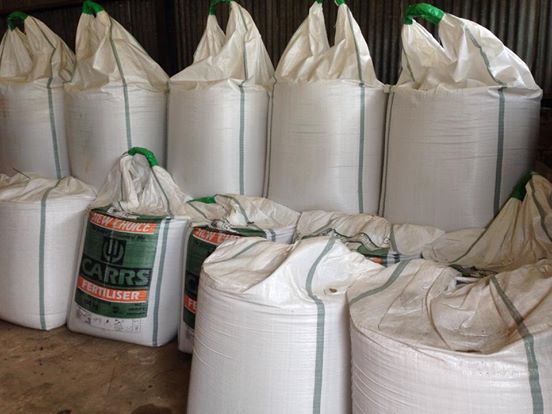Union calls for self-regulation in Stranraer and Finavon areas
NFU Scotland has welcomed Scottish Government proposals which herald a significant reduction in the area of farmland in Scotland affected by Nitrate Vulnerable Zone (NVZ) restrictions.
However, those same proposals could bring new areas near to Stranraer in Dumfries and Galloway and Finavon in Angus into the NVZ for the first time. In these cases, NFU Scotland has called for self-regulation rather than designation to apply.
Around Stranraer and Finavon, groundwater monitoring has shown that action already undertaken by farmers has seen nitrate levels fall. NFU Scotland believes that such positive action justifies a programme of self-regulation and monitoring, to ensure further progress is made – rather than forcing all producers in these areas to comply with complex and costly NVZ requirements. The Union organised meetings last month in both the Stranraer and Finavon areas to discuss the proposals.
In addition, NFU Scotland believes monitoring results also justify the Lochar Moss area near Dumfries being removed from the NVZ restrictions, and this also forms part of its submission to Scottish Government.
NVZs were introduced in Scotland in 2002 with the aim of reducing the levels of potentially harmful nitrates in groundwater. Scotland currently has 14 percent of its total landmass designated as an NVZ where the restrictions on nitrate inputs, coupled with the closed periods on slurry application and paperwork burden, mean that being in an NVZ has a significant impact on a farm business. The proposals would reduce the area of Scotland covered by NVZ restrictions by almost a quarter.
NFU Scotland Vice President Allan Bowie said:
“It is clear from the monitoring results, that farmers in both Finavon and around the Piltanton Burn near Stranraer are taking their responsibilities on water quality very seriously. When positive action on the ground is already delivering results, imposing full NVZ restrictions on these parts would be premature.”
Combinable Crops Chairman, Andrew Moir, who chaired the recent Finavon meeting, added:
“Given the small number of monitoring points within the Finavon groundwater body, the declining trend in groundwater nitrate levels, and the positive response by local farmers to SEPA’s South Esk Priority Catchment work, there is a strong case for this area to remain out with the Strathmore and Fife NVZ until at least the next NVZ review.
“We accept that there requires to be further and sustained improvements in the status of the Finavon groundwater body. To achieve that, we propose that a self-regulation pilot be established, co-ordinating and encouraging local activity to reduce groundwater and surface water diffuse pollution. The success or failure of the pilot would be judged objectively by meeting criteria agreed with Scottish Government and SEPA.”
Stranraer dairy farmer Gary Mitchell, who chaired the recent local meeting said:
“A self-regulatory approach in the Piltanton burn area, near Stranraer is valid. Here, there is a downward trend in nitrate levels, a multi-million pound investment by local farmers in 43 new slurry stores, and enthusiastic uptake of the good practice encouraged by the Piltanton Burn Catchment Initiative.
“Investment in slurry storage, winter housing for cattle and fencing off watercourses has been undertaken in an effort to stave of NVZ designation. Were the Scottish Government to designate at this point in time – when the results of this activity and investment have had insufficient time to translate into changes in nitrate levels would critically damage local faith in Scottish Government, SEPA and the partnership approach built up in that area.”
Deputy Director of Policy, Andrew Bauer, who wrote the NFUS submission added:
“A clear anomaly that must also be addressed by Scottish Government is that the consultation lists the Lochar Moss groundwater body as meeting the criteria for de-designation, but in the maps of the proposed new boundary it remains largely within the NVZ.
“In fact, the improved methodology now being used points to Lochar Moss groundwater body being at “good status, green risk, high confidence” – the best possible result for a groundwater body. It would therefore be perverse if this area was kept within an NVZ, undermining the credibility of the revised methodology and review process.
“The development and adoption by Scottish Government and SEPA of more robust and proportionate testing is something NFUS has been pursuing for some time and a very welcome development. The results mean that Scottish Government is now proposing to reduce the overall area of the NVZs in Scotland by 24 percent – something NFU Scotland wholeheartedly welcomes.
“That said, NFU Scotland fully accepts that all of Scottish agriculture has to continue to work to ensure that diffuse pollution is tackled as far as is possible. Those who are potentially going to be removed from the NVZ are not being given a one-way ticket out – if groundwater nitrate levels increase they could potentially be re-designated in future reviews.”






